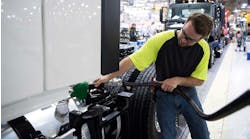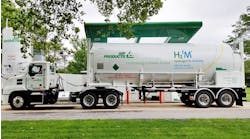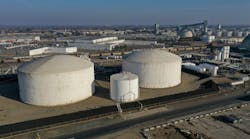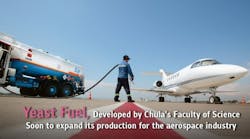Researchers from Chulalongkorn University in Thailand say yeast will play a key role in the production of fossil-based renewable fuels, including aviation biofuel. The Chulalongkorn Faculty of Science team now seeks to scale production of this fuel created from a fat-producing yeast strain and agricultural waste.
“The team has been successful in the separation of Saccharomyces cerevisiae yeast [CU-TPD4 strain] that has a high potential for fat accumulation,” Dr. Warawut Chulalaksananukul, a professor at Chulalongkorn, reported in a news release. “We have used yeast to produce biojet fuel to meet future energy demand.
“If we can develop Thailand’s potential in the production of bio-jet fuel, it would help our economy progress as well.”
How did the research originate?
Petroleum is an important source of fuel in today’s world, both in various industrial sectors and in transportation, especially the aircraft industry. A report from the Department of Energy Business of the Ministry of Energy (2019) stated that Thailand's jet fuel import volume has increased significantly. In 2016, Thailand imported 84.9 million liters of jet fuel, but only four years later, in 2019, the amount of jet fuel imports soared to 376.3 million liters per year.
This increase in fuel imports reflects growing industrial demand and the need to find innovations to produce alternative energy that is more friendly to human health and the environment than petroleum, researchers said.
Chulalaksananukul and Dr. Chompunuch Glinwong, an assistant professor in the university’s Department of Botany, conducted the “Development of scaling-up technology for production of microbial lipid for biojet fuel synthesis” research project, which received funding from the National Research Council of Thailand, focusing specifically on the Sino-Thai Plans for Renewable Energy to work on the extraction of fat, production of bio-jet fuel from microbial lipid synthesis, and bio-refinery of jet fuel from biomass resources.
High-potency yeast produces fuel
The two researchers and their team selected the yeast from 53 soil samples found in Mae Hongson and other nearby provinces and discovered Saccharomyces cerevisiae yeast (CU-TPD4 strain), which has a high potential for fat accumulation. This came at a time when there had not yet been any reports that this type of yeast could produce high levels of fuel at the same level as existing fuel-producing yeast.
“S. cerevisiae is classified as a microorganism with high safety levels. It is known to have been used for a very long time, is ‘Generally Recognized as Safe,’ or GRAS, and is therefore used in the food production industry, such as for beer or bread production. Yet, it has not been reported that the particular strain of yeast has been used for the production of fat at the industrial level.”
Chulalaksananukul explained that the type of yeast that has been discovered can produce and collect fat in the cells at a level as high as 20–25% of the dry cell weight. These fat properties are extremely beneficial for the development of bioenergy, such as biodiesel.
"Using oleaginous yeast as a feedstock for biofuel production has several advantages over using plants as an oil source, including the fact that the lifecycle of yeast is short, a variety of foods can be used for its cultivation, it is relatively cheap, and it requires little labor,” he said. “It can be cultivated at any time and doesn’t depend on the season; scaling up production is easy, while the fat produced has the same characteristics as that produced from plants. It is safe both for humans and the environment.”
Raising yeast using agricultural waste
In addition to getting energy that is cleaner than fossil energy, the process of growing yeast to produce oil also makes use of agricultural waste, which is part of driving the circular economy and reducing air pollution problems from the burning of agricultural waste, researchers maintained.
In addition to animal fodder grass, agricultural waste and various types of lignocellulosic biomass can be used as carbon sources to feed fat-accumulating yeasts, for example rice straw, corn cobs, sugarcane bagasse, as well as various vegetable and fruit peels such as banana peels, durian peels, and bean shells, especially rice straw, which is a large amount of waste material in Thailand. Therefore, it is considered another way to use agricultural waste to be beneficial as well.
However, the growth of yeast and the amount of oil produced by yeast on a laboratory scale are still not sufficient to meet the demand for fuel in the market. Therefore, it is necessary to develop technology to expand production capacity.
“This can be done by using different methods, such as improving strains of fat-accumulating yeast to increase their ability to produce and accumulate more fat or improving the yeast to be more resistant to conditions that are not suitable for growth,” Chulalaksananukul said. “Improve yeast to be more resistant to conditions that are not suitable for growth, such as being able to withstand higher temperatures in the production process to reduce cooling costs.
“They can also be more resistant to toxins that occur from the process of pretreatment of agricultural waste to reduce the steps and costs of the detoxification process, for example.”











